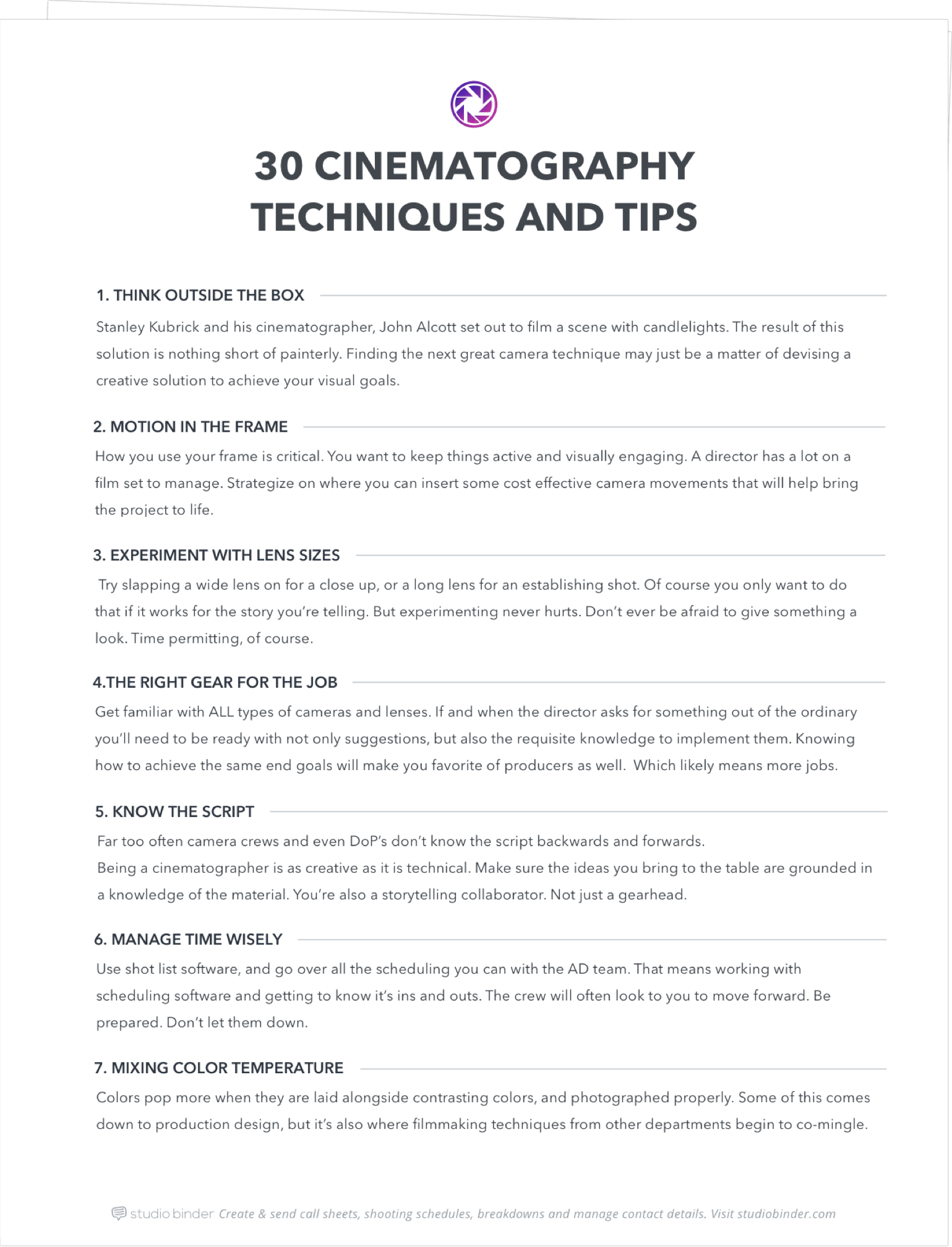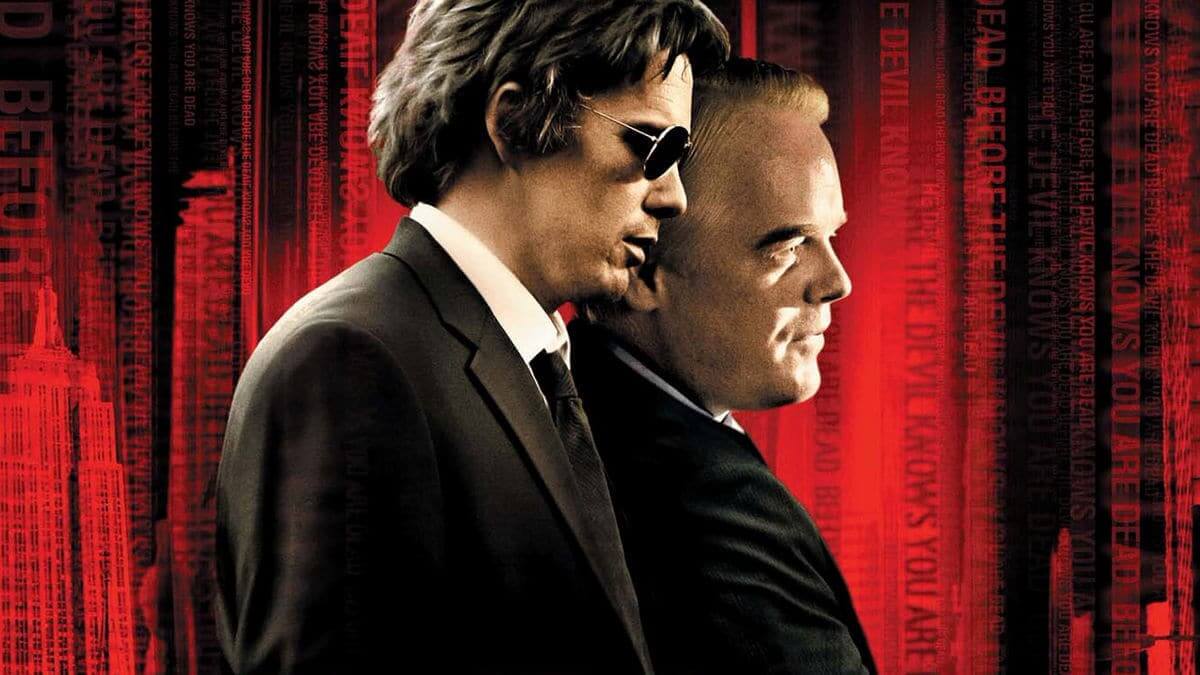Sidney Lumet directed feature films and television for over 50 years. In other words, we can learn a lot from his perspective about the film business and film directing. We were lucky enough that Lumet decided to share these thoughts in book form. “Making Movies” by Sidney Lumet is an invaluable resource for any filmmaker. In particular, we’re going to review Lumet’s idea of a “lens plot,” its three variations, and how you can use these concepts in your next project.
- What is a lens plot?
- The static lens plot
- The narrative lens plot
- The elemental lens plot
Overview
What is a lens plot?
In the book, "Making Movies" by Sidney Lumet, the iconic director describes a lens plot as the way your camera tells the story. A lens plot, he says, is like a "style guide" — a way to make sure everything in the visuals serves the story, character, and theme.
This approach to filmmaking creates unity between the script and the film. And a more emotionally satisfying — and cohesive — experience for the audience.
Lumet breaks this idea of a "lens plot" into three categories: static, narrative, and elemental. Each type of lens plot is a way to approach your visual storytelling. And great filmmakers understand how to use each of these types in a single film.
We're going to look at these types one at a time. Before we get there, do yourself a favor and watch this interview with Mr. Lumet discussing his book with Charlie Rose.
Full interview on "Making Movies"
Choosing A Cinematic Look
The static lens plot
In the simplest terms, the "static lens plot" is the overall "look" of your film. For Lumet, every director begins with a question of how best to present this film to the audience.
Should it be shot in black and white? Should we use a hand-held camera, a tripod, or a combination of the two? Is the lighting gritty and realistic, or beautiful and expressionistic?
This is where the director and cinematography begin their collaboration. When they choose lenses, lighting/color schemes, and film stocks, they establish the static lens plot.
In this video, watch Roger Deakins explain how tries to give each film its own distinct lens plot, with a particular focus on his work in Sicario.
Deakins discusses the lens plot for Sicario
Lumet's theory also suggests that there should be a consistency to a film's look. There is where the term "static" applies — from the root word "stasis," meaning balance or equilibrium.
For example, if you begin your film with a chaotic hand-held camera, we expect that style to remain reasonably consistent for the entire movie. It would seem odd to suddenly switch to a controlled and motionless style unless the story motivated it.
The parameters of this look can be rigid or loose, depending on the filmmaker and the film itself.
For example, Wes Anderson has a very static lens plot — we can tell from a single frame that we're looking at a Wes Anderson film. His style is very consistent within each film and within his filmography.
Anderson discusses his own lens plot
Someone like Darren Aronofsky has a much "looser" static lens plot. The films themselves remain stylistically consistent. But there is a very different look between Pi and The Fountain, for example.
Evolving a Cinematic Look
The narrative lens plot
While the static lens plot is anchored by consistency, the narrative lens plot is all about evolution. We expect a film to evolve in various ways — as tension mounts towards the climax, for example. The energy and tone at the beginning are often different than what we see by the end.
This requires, according to Lumet, a shift in the lens plot. How do the formal techniques change to match the change in the story? The neutral wide shots of our hero, in the beginning, might slowly turn into close-ups as they reach an emotional peak.
Watch Moonlight director, Barry Jenkins, talk about the choices he made to create empathy for his characters.
Jenkins on creating empathy
This is where understanding film language becomes essential. As the emotional pitch of the film changes, the visuals change as well. Successfully executing these shifts means that the audience doesn't "see" these changes, but they "feel" them. The psychological effect of using a wide-angle lens vs. a longer lens, for example, is critical.
There are many considerations like this to keep in mind when approaching your lens plots. Download our cinematography tips cheat sheet so you won't forget.
Free downloadable bonus
Download FREE Cinematography Techniques Cheatsheet
This article took 30 hours to write. Thirty! Needless to say, there was a LOT we couldn’t include in the post. Download our FREE, printable cheatsheet PDF to get access to over 30+ cinematography tips (includes bonus content not in the post).

Assigning A Cinematic Look
The elemental lens plot
The final type of lens plot deals with assigning specific "looks" to different characters, locations, or scenarios. It's almost like giving a static lens plot to various elements within the same film.
For example, you can present different locations with different "looks." Let's say you have two characters — one rich, one poor. For scenes at the rich character's house, you might want to use wide lenses to capture the large living spaces of their mansion. When we switch to the poor character, their small and cramped apartment could be shot to feel more claustrophobic.
In this rich/poor scenario, the audience will know from the story that these two characters are different. A smart director will take that extra step to present their worlds differently as well. This type of thoughtful filmmaking is what elevates a director's work. It's what makes the difference between a good director and a great director.
The featured video at the top of this page discusses the elemental lens plots in Steven Soderbergh's Traffic. In this full interview with Charlie Rose, Soderbergh talks in detail about the choices he made to differentiate the different locations and characters.
Soderbergh on elemental lens plots
"Making Movies" by Sidney Lumet is a fantastic resource for filmmakers. Lumet's concept of "lens plots" are just the beginning. His insights into the business and craft of filmmaking are definitely worth your time.
Related Posts
Up Next
Unique Framing in “Mr. Robot”
Now that we have a firm grasp on Lumet’s concept of lens plots, let’s look at a specific example. For the show, “Mr. Robot,” the filmmakers use unconventional framing as part of their static lens plot. This visual aesthetic not only provides a unique perspective for the series, but it also enhances the themes of the show. You’ll see how themes of paranoia and surveillance are accentuated by the simple choice to include compositions that break all the rules.
Up Next: Unconventional frames in “Mr. Robot” →
Showcase your vision with elegant shot lists and storyboards.
Create robust and customizable shot lists. Upload images to make storyboards and slideshows.
